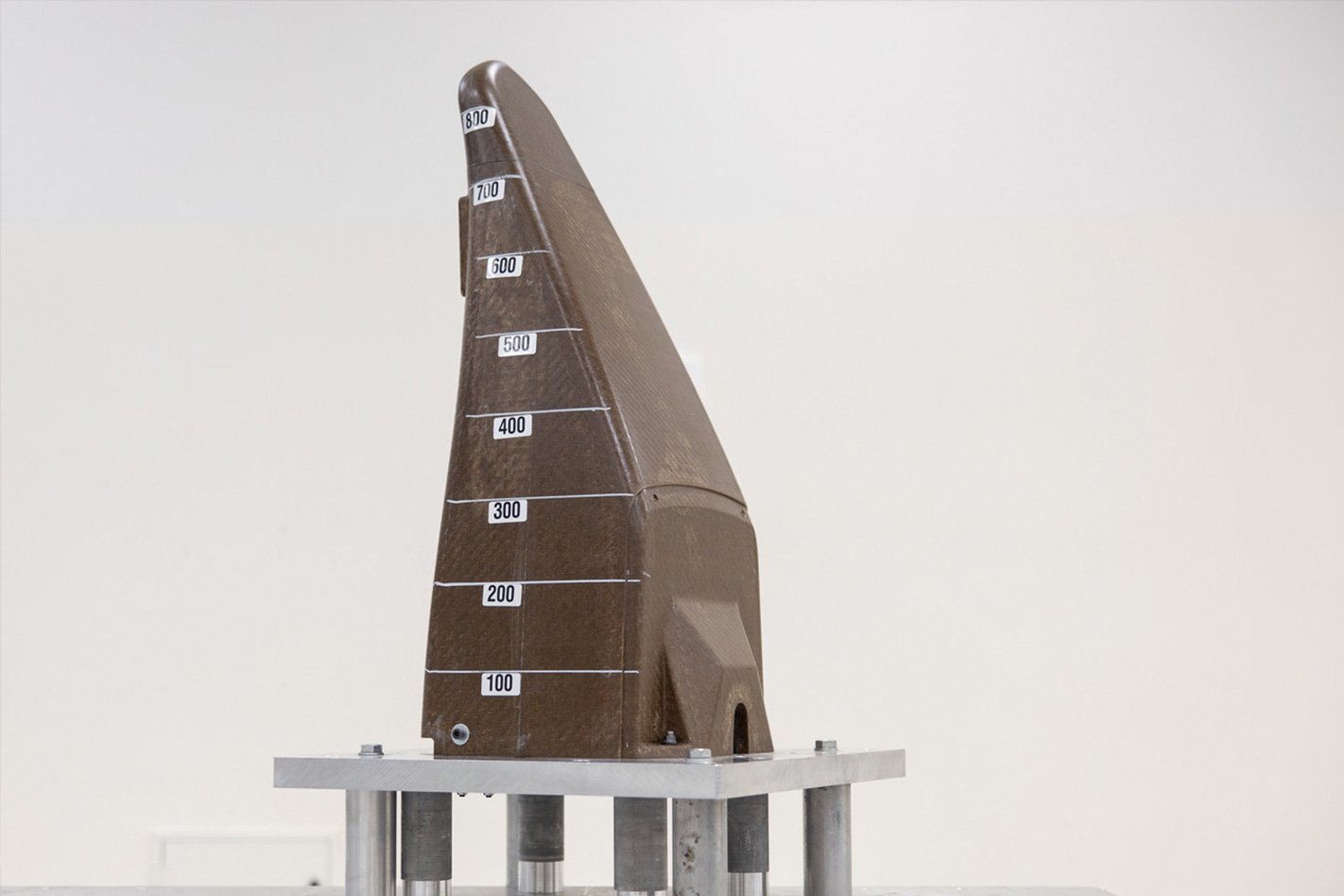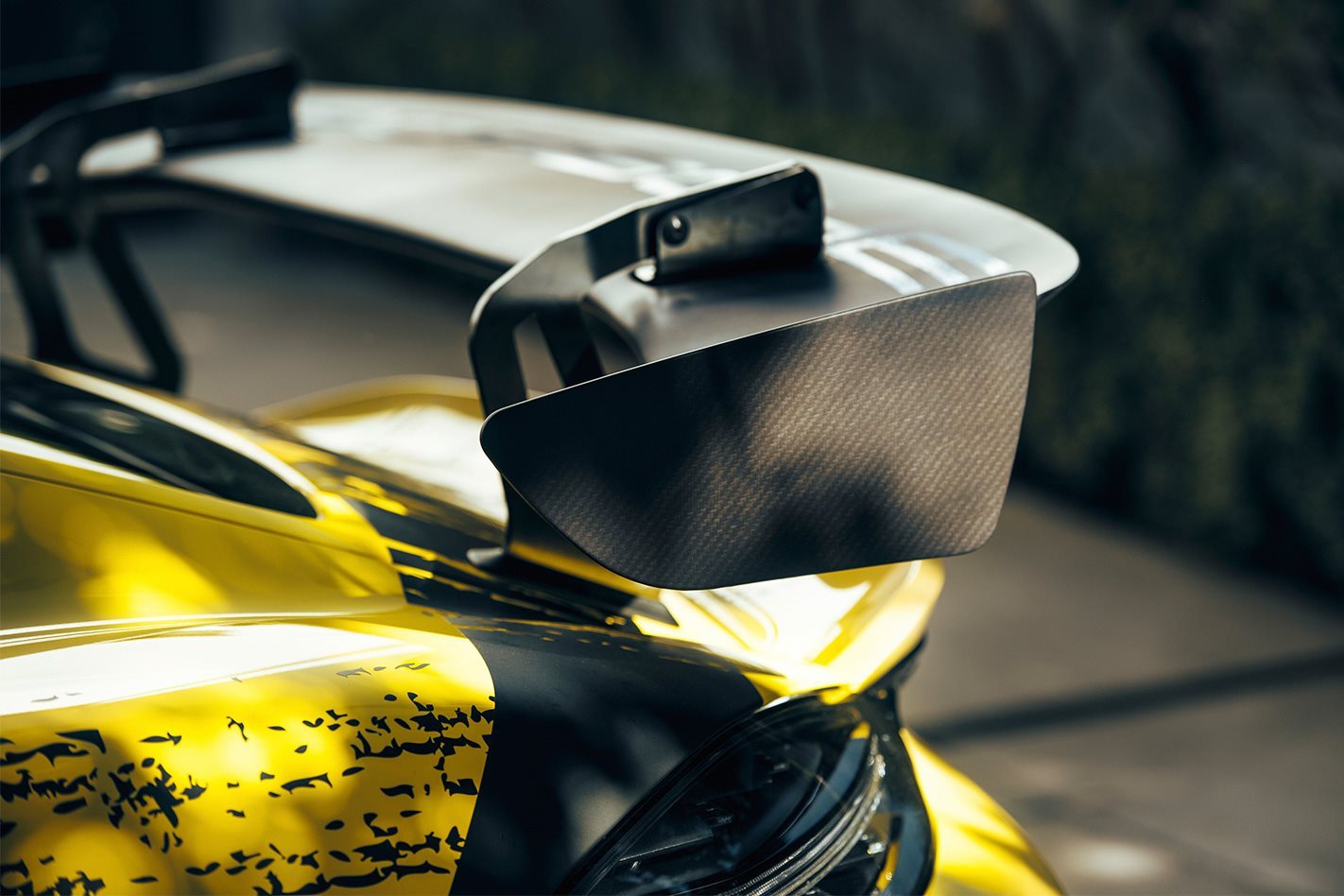Carbon fibre is cool: fact. It’s a gospel truth of the automotive world that if you want to make anything ooze an aura of awesome that’d make Steve McQueen jealous, just drape it in that silky black weave.
Behind the aerospace and defence sector, the automotive industry is the world’s next biggest consumer of carbon fibre. Problem is, carbon fibre requires vast amounts of energy to create, and is incredibly difficult to recycle. So, as the motoring world relentlessly moves toward a more ecologically conscious future, sustained use of the lightweight composite will become an ever larger moral quandary.

Enter ampliTex, a carbon-fibre-like material that is created from sustainable materials, requires less energy to produce, and can be recycled easily. The alternative to traditional composite materials has been created by Bcomp, a Swiss outfit that specialises in creating sustainable lightweight materials. Porsche uses ampliTex on its Cayman GT4 Clubsport racer, while the McLaren F1 team is evaluating the material for the construction of Daniel Ricciardo’s seat for 2021.
The core ingredient of ampliTex is flax, a plant used primarily in the production of linen. Not only are the raw materials needed to create ampliTex better for the environment compared to carbon fibre, but it also requires less energy to create.
Porsche Motorsport’s composites expert Eduard Ene said last year that producing the raw materials for the Cayman GT4 Clubsport’s doors and wing required 75 per cent less energy than carbon fibre.

Up until now, natural fibre alternatives to carbon fibre have been used for non-structural components such as bonnets and wings. However, Bcomp has partnered with YCOM (an advanced motorsport technologies company that has been involved in projects like the VW ID.R and Porsche 919) to create the first Front Impact Absorbing Structure made entirely of sustainable materials to pass FIA tests. It was the nose of an F1 car.
For the first time since lightweight composite monocoques stormed onto the F1 grid with the McLaren MP4/1, a sustainable alternative is now available, with FIA-approved testers Politecnico stating that the ampliTex crash structure performed in line with one made from carbon fibre. Bcomp and YCOM state that their ampliTex crash structure reduces CO2 emissions by 50 per cent during construction compared to more traditional composites.

There are downsides, namely weight. The ampliTex crash structures can be 40 per cent heavier than carbon fibre, currently ruling it out for extensive use in elite competition. However, the material offers significant benefits in vibration damping, where it is five times more effective than carbon fibre. This is part of the reason why McLaren is using the material for future F1 seat construction, reducing the amount of vibration transferred to the driver in the cabin. When not being used in a dense crash structure, ampliTex offers a 9 per cent weight bonus compared to a carbon equivalent.
Should you have a shunt, ampliTex also delivers. Where carbon fibre splinters into small, sharp pieces that are difficult to clean up, the natural fibre alternative breaks up into larger, smoother chunks under high-impact loads. It’s also difficult to recycle carbon fibre once it has been in an accident – it must be burnt at extremely high temperatures to be disposed of – where the natural alternative can be ground down for reuse.
While natural fibres like ampliTex are yet to make their way into road car construction, both Porsche and McLaren are currently investigating the materials. Initially, the material will be used for non-structural components, but its vibration damping and reusable qualities mean manufacturers will be looking at ways to integrate the material more in the construction process.

01. ADDED FIBRE
To create ampliTex, flaxseed is woven into a fibre, which is then shaped much like traditional composite materials. Multiple sheets of the weave are laid on top of each other and then strengthened by a grid of twisted, thick pieces of yarn also made from flax that Bcomp calls powerRibs.
02. ECO FRIENDLY
A hectare of flax plants is capable of absorbing and converting 3.7 tonnes of carbon dioxide into oxygen each cycle. The plant can also be used in crop rotation programs, meaning it can be farmed and harvested without interfering with food production. Creating the raw materials for ampliTex is a CO2 neutral process.
03. COST EFFECTIVE
Despite being a relatively new material, construction of ampliTex is cheaper than carbon fibre. McLaren says that the raw materials needed to create an ampliTex seat for its F1 car cost 30 per cent less than a carbon fibre equivalent. With new cost-cutting rules being put in place, expect natural fibres to begin proliferating the F1 pit lane.
04. RACE READY
Manthey Racing, Porsche’s pseudo factory race team, is gearing up to offer natural fibre panels and wings for the 718 Cayman GT4 MR to customers after testing the parts at the most recent 24 Hours of Nűrburgring race. For the event, the Manthey Racing Cayman’s front and rear aprons, front spoiler, front and rear bonnets, mudguards, and diffuser were all made from natural fibres.






